- Home
- /
- Product Management
- /
- The Ultimate Guide to Product…
Introduction
Product management is a dynamic and multifaceted discipline that plays a pivotal role in the success of any business. It involves overseeing the entire lifecycle of a product, from its conception to development, launch, and ongoing optimization. In this comprehensive guide, we’ll delve into the key aspects of product management, exploring its core principles, best practices, and the skills needed to excel in this ever-evolving field.
What is Product Management?

Product management is the bridge between the customer’s needs and the development team’s capabilities. At its core, it involves defining a product strategy, creating a roadmap, and ensuring the successful execution of the product vision. The product manager is the linchpin, coordinating efforts across various teams to deliver a product that meets both business objectives and customer expectations.
Agile Product Management

Agile product management is an approach to product development and project management that aligns with the principles of Agile methodology. It emphasizes flexibility, collaboration, and iterative development to respond to changing market conditions and customer needs. Agile product management is commonly used in software development but has also found applicability in various industries.
Key principles of Agile product management include:
Iterative Development
Agile product management encourages iterative development, allowing for the incremental release of product features. This iterative approach allows teams to adapt and make improvements based on user feedback throughout the development process.
Customer Collaboration
Continuous collaboration with customers and stakeholders is a fundamental aspect of Agile product management. This ensures that the product meets user needs, and feedback is incorporated into the development cycle.
Adaptability to Change
Agile product management is highly adaptable to changes in requirements, priorities, or market conditions. It values responding to change over following a rigid plan, allowing teams to pivot quickly when necessary.
Cross-Functional Teams
Agile promotes the formation of cross-functional teams that include members with diverse skills, such as developers, designers, and product managers. This interdisciplinary collaboration enhances communication and the ability to deliver a complete product.
Backlog Management
Product backlogs are used to prioritize and manage features, enhancements, and tasks. The backlog is dynamic and evolves as priorities change or new information becomes available.
Sprints and Time-Boxed Development
Agile product management often employs time-boxed development cycles known as sprints. Sprints typically last two to four weeks, during which a set of prioritized features is developed, tested, and potentially released.
Continuous Feedback and Improvement
Regular feedback loops, such as sprint reviews and retrospectives, are essential in Agile product management. Teams reflect on what went well, what could be improved, and how to enhance their processes continuously.
Product Owner Role
The Product Owner is a key role in Agile product management. The Product Owner is responsible for prioritizing the backlog, defining user stories, and making decisions about the product’s features and functionalities.
Minimum Viable Product (MVP)
Agile product management often involves the concept of creating a Minimum Viable Product (MVP). An MVP is the most basic version of a product that allows for testing and validation of key hypotheses with minimal development effort.
Emphasis on Delivering Value
Agile places a strong emphasis on delivering value to the customer. Teams prioritize features based on the value they provide and work on high-priority items that align with the overall product strategy.
By embracing Agile product management principles, teams can respond more effectively to changing market dynamics, deliver products that better meet customer needs, and improve overall efficiency and collaboration in the product development process.
The Role of a Product Manager

Product managers wear many hats, acting as communicators, strategists, and problem-solvers. They are responsible for market research, defining product features, prioritizing tasks, and collaborating with cross-functional teams. A successful product manager must strike a balance between technical understanding and user empathy.
Types of Product Managers

Product management is a multifaceted field, and product managers often specialize in different areas based on their skills, interests, and the specific needs of the organization. Here are some common types of product managers, each with its focus:
Technical Product Manager
Specializes in products with complex technical requirements. Technical product managers typically have a strong technical background and work closely with development teams to ensure the successful implementation of features.
Data Product Manager
Focuses on products that are data-driven or involve significant data components. Data product managers work on analytics platforms, data visualization tools, and products that facilitate data-driven decision-making.
E-commerce Product Manager
Specializes in products within the e-commerce domain. E-commerce product managers focus on optimizing user experiences, improving conversion rates, and implementing features that enhance the online shopping experience.
Platform Product Manager
Manages products that serve as platforms for other products or services. Platform product managers focus on creating robust and scalable solutions that can be leveraged by various applications.
Digital Product Manager
Works on products that are primarily digital, such as mobile apps, software applications, or online platforms. Digital product managers often emphasize user experience and engagement in the digital space.
Consumer Product Manager
Focuses on products designed for individual consumers. Consumer product managers often work on products with a wide user base and prioritize features that enhance the end-user experience.
Enterprise Product Manager
Specializes in products designed for businesses and enterprises. Enterprise product managers focus on features that cater to the needs of organizations, addressing scalability, security, and integration requirements.
Hardware Product Manager
Manages products that involve physical hardware components. Hardware product managers work on products such as consumer electronics, IoT devices, and other tangible goods.
Social Product Manager
Focuses on products within the social media and networking space. Social product managers work on features that facilitate user interactions, engagement, and community-building.
AI/ML Product Manager
Specializes in products that leverage artificial intelligence (AI) and machine learning (ML) technologies. AI/ML product managers work on products that involve predictive analytics, recommendation systems, and other AI-driven capabilities.
Mobile Product Manager
Specializes in products designed for mobile platforms, such as smartphones and tablets. Mobile product managers focus on optimizing user experiences for mobile users and may work on mobile apps or responsive web applications.
Healthcare Product Manager
Focuses on products within the healthcare industry. Healthcare product managers work on solutions that address the unique challenges and regulations of the healthcare sector, such as electronic health records or telemedicine platforms.
These roles may overlap, and some product managers may wear multiple hats depending on the organization’s size and structure. Additionally, the product management field is dynamic, and new roles may emerge as technology and market trends evolve.
Types of Product Management Roles

Product management encompasses various roles that contribute to different aspects of the product development and management process. Here are some common types of product management roles:
Product Manager
Responsible for the overall strategy, development, and success of a product. Product managers work closely with cross-functional teams to define the product roadmap, prioritize features, and ensure alignment with business goals and customer needs.
Technical Product Manager
Combines technical expertise with product management skills. Technical product managers work on products with complex technical requirements, collaborating closely with development teams to ensure the successful implementation of features.
Associate Product Manager
An entry-level position in product management. Associate product managers support senior product managers in tasks such as market research, data analysis, and project coordination. It’s a role where individuals can gain practical experience and grow within the field.
Senior Product Manager
Takes on a more strategic and leadership role within the product management team. Senior product managers often oversee a portfolio of products, guide the product strategy, and collaborate with executive leadership.
Product Owner
A role commonly associated with Agile development methodologies. Product owners work closely with development teams, defining user stories, maintaining the product backlog, and ensuring that features align with the overall product vision.
Director of Product Management
Provides leadership to the product management team. Directors of product management are responsible for setting the overall product strategy, guiding product managers, and ensuring alignment with organizational goals.
VP of Product Management
Holds a senior leadership position and is responsible for the overall success of the product management function within the organization. The VP of Product Management works closely with executive leadership to drive product-related initiatives.
Product Marketing Manager
Focuses on the marketing aspects of a product. Product marketing managers work on positioning, messaging, and go-to-market strategies. They collaborate with product managers to ensure successful product launches.
Data Product Manager
Specializes in products that are data-driven or have a significant data component. Data product managers work on products related to analytics, data visualization, and data-driven decision-making.
E-commerce Product Manager
Focuses specifically on products within the e-commerce domain. E-commerce product managers work on optimizing user experiences, improving conversion rates, and implementing features that enhance the online shopping experience.
Platform Product Manager
Manages products that serve as platforms for other products or services. Platform product managers focus on creating robust and scalable solutions that can be leveraged by various applications.
Digital Product Manager
Works on products that are primarily digital, such as mobile apps, software applications, or online platforms. Digital product managers often emphasize user experience and engagement.
These roles may have variations in titles and responsibilities based on the organization and industry. Additionally, the evolving nature of the product management field means that new roles may emerge to address specific needs and challenges in the market.
Product Management Skills

Analytical Skills
Product managers need to analyze market trends, user feedback, and data to make informed decisions.
Communication Skills
Effective communication is crucial for conveying the product vision, priorities, and goals to various stakeholders.
Leadership
Product managers lead without authority, guiding teams towards a common goal and motivating them to deliver their best work.
Technical Proficiency
While not always mandatory, a basic understanding of the technical aspects of product development can enhance communication with engineering teams.
How to Get into Product Management

Getting into product management involves a combination of education, skills development, networking, and practical experience. Here’s a step-by-step guide to help you break into product management:
Understand the Role
Gain a clear understanding of what product management entails. Research the responsibilities, skills, and characteristics of successful product managers. This will help you assess your interest and suitability for the role.
Educational Background
While there’s no specific educational path required for product management, having a background in business, engineering, marketing, or a related field can be beneficial. Consider pursuing relevant degrees or certifications, such as an MBA or product management courses.
Develop Core Skills
Cultivate essential skills for product management, including communication, problem-solving, analytical thinking, and a customer-centric mindset. Familiarize yourself with tools and methodologies commonly used in product management, such as Agile and Scrum.
Gain Industry Knowledge
Stay informed about industry trends, market dynamics, and emerging technologies. Understanding the market in which you want to work will demonstrate your commitment and value to potential employers.
Build a Strong Online Presence
Create a LinkedIn profile highlighting your skills, education, and any relevant experiences. Connect with professionals in the product management field, join relevant groups, and share insightful content to establish your presence.
Network
Attend industry events, conferences, and meetups to connect with professionals in the product management community. Networking can open doors to opportunities, provide insights, and help you build a supportive professional network.
Gain Practical Experience
Look for internships, entry-level positions, or projects that allow you to gain hands-on experience in product-related roles. Even if the title doesn’t explicitly say “product manager,” roles in customer support, marketing, or project coordination can provide valuable experience.
Build a Portfolio
Create a portfolio showcasing your relevant skills and experiences. Include projects, case studies, and any measurable outcomes that demonstrate your ability to contribute to product development.
Learn from Others
Seek mentorship or guidance from experienced product managers. Learn from their experiences, ask for advice, and use their insights to enhance your understanding of the role.
Apply for Entry-Level Positions
Start applying for entry-level product management positions or roles that align with the skills and experiences you’ve developed. Tailor your resume and cover letter to highlight your relevant skills and achievements.
Prepare for Interviews
Be ready to discuss your experiences, problem-solving abilities, and understanding of product management principles in interviews. Practice answering common product management interview questions and be prepared to provide examples of your work.
Continuously Learn and Improve
Product management is a constantly evolving field. Stay curious, seek opportunities for continuous learning, and stay updated on industry trends. This proactive approach will make you a more valuable and adaptable candidate.
Remember, breaking into product management may take time, and the path can vary for individuals. Stay persistent, leverage your network, and continuously refine your skills and knowledge to increase your chances of success in the field.
Product Development Lifecycle

Idea Generation
The process begins with identifying opportunities and generating innovative ideas that align with the company’s strategy.
Conceptualization
Once an idea is selected, it’s time to create a detailed concept, defining the product’s purpose, target audience, and unique selling propositions.
Development
The actual building of the product involves collaboration between design, engineering, and other relevant teams.
Testing and Iteration
Rigorous testing and user feedback are essential for refining the product and ensuring it meets user expectations.
Launch
A well-planned launch strategy is crucial for gaining market traction and creating initial buzz.
Post-Launch Optimization
Continuous improvement based on user feedback and market changes is key to a product’s long-term success.
Product Management Software and Tools

Product Roadmap Software
Tools like Aha!, Jira, or Trello help product managers visualize and communicate their product roadmap.
User Feedback Platforms
Platforms like UserVoice or Zendesk facilitate collecting and analyzing user feedback.
Collaboration Tools
Communication and collaboration tools such as Slack or Microsoft Teams are essential for seamless teamwork.
For more tools on product management check out here.
Product Management vs. Project Management
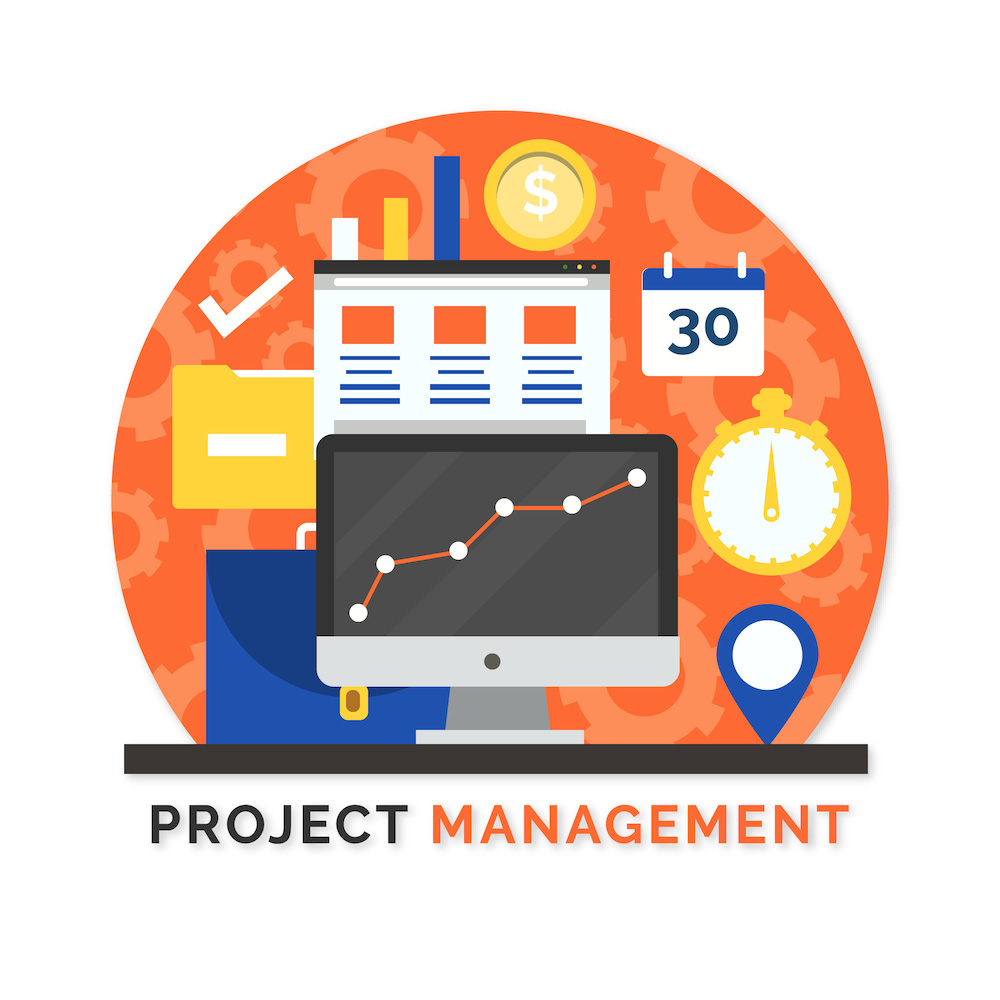
Product management and project management are distinct disciplines, each with its own set of responsibilities, goals, and focus. Let’s explore the key differences between product management and project management:
| Product Management | Project Management | |
|---|---|---|
| Focus and Purpose | Focuses on the entire lifecycle of a product, from ideation and development to launch and optimization. Product managers are responsible for aligning the product with business goals, customer needs, and market trends. | Focuses on the successful execution of a specific project. Project managers are responsible for planning, organizing, and coordinating resources to achieve defined project goals within scope, time, and budget constraints. |
| Timeline and Duration | Involves long-term strategic planning and ongoing activities. Product managers work continuously to ensure the product’s success throughout its lifecycle. | Has a specific timeframe with a defined start and end date. Project managers focus on delivering a specific set of objectives within the project’s constraints. |
| Scope of Work | Involves a broader scope that includes market research, product strategy, feature prioritization, and overall product success. Product managers are concerned with the “what” and “why” of a product. | Focuses on the specific tasks, activities, and milestones required to complete a project successfully. Project managers are concerned with the “how,” ensuring tasks are completed efficiently. |
| Stakeholder Involvement | Involves collaboration with various stakeholders, including customers, marketing, sales, and development teams. Product managers act as a bridge between different departments to align the product with business goals. | Involves coordination with internal and external stakeholders, ensuring that project requirements and objectives are understood and met. |
| Success Metrics | Success is measured by the product’s overall impact on the market, customer satisfaction, and achieving strategic business goals. | Success is measured by delivering the project on time, within budget, and meeting the predefined project objectives. |
| Adaptability | Requires adaptability to changing market conditions, customer feedback, and emerging trends. Product managers must continuously iterate and optimize the product. | Requires adaptability to unforeseen challenges and changes within the project scope. Project managers focus on maintaining project timelines and budgets. |
| Ownership | Involves a sense of ownership over the entire product lifecycle. Product managers are responsible for the success or failure of the product in the market. | Involves ownership of the specific project’s execution. Project managers are responsible for delivering the project on time and within scope. |
In summary, while product management and project management share some commonalities, they serve different purposes and operate on different timelines. Product management is focused on the overall success of a product throughout its lifecycle, while project management is concerned with successfully delivering a specific project within defined constraints. Both roles are essential for the overall success of an organization.
Product Management vs. Program Management

Product management and program management are roles that play distinct yet interconnected roles within an organization. Let’s explore the key differences between these two roles:
| Product Management | Program Management | |
|---|---|---|
| Focus and Purpose | Focuses on the development and success of a specific product or a set of related products. Product managers are responsible for defining the product strategy, prioritizing features, and ensuring the product meets customer needs and business goals. | Focuses on overseeing and coordinating a set of related projects to achieve strategic objectives. Program managers work at a higher level, ensuring that individual projects align with the overall goals and objectives of the organization. |
| Scope | Has a narrower scope, focusing on the detailed aspects of a particular product or product line. | Has a broader scope, encompassing multiple projects that are interconnected and contribute to achieving a larger organizational goal or initiative. |
| Responsibilities | Involves responsibilities such as market research, product roadmap development, feature prioritization, and continuous product optimization. | Involves responsibilities such as strategic planning, resource allocation across multiple projects, risk management, and ensuring alignment with organizational objectives. |
| Ownership | Product managers have ownership over the success or failure of a specific product or product line. | Program managers have ownership over the successful execution of a set of related projects and the achievement of overarching organizational goals. |
| Time Horizon | Involves both short-term and long-term planning, with a continuous focus on the product’s lifecycle. | Often involves longer-term planning, aligning projects to strategic initiatives that may span several years. |
| Stakeholder Interaction | Interacts closely with stakeholders such as customers, marketing teams, and development teams to ensure the product meets market demands. | Interacts with senior leadership, executives, and various project managers to ensure that individual projects within the program are contributing to the overall strategic objectives. |
| Metrics and Success Criteria | Success is measured by the product’s impact on the market, customer satisfaction, and alignment with business goals. | Success is measured by the achievement of strategic objectives, effective utilization of resources, and the successful delivery of multiple projects within the program. |
| Decision-Making Authority | Involves decision-making related to the features, design, and optimization of a specific product. | Involves decision-making related to resource allocation, risk management, and overall program strategy. |
In summary, while product management focuses on the success of individual products, program management takes a broader perspective, overseeing and coordinating multiple projects to achieve overarching organizational goals. Both roles are crucial for the effective functioning and success of an organization, and they often require collaboration to ensure alignment between product-level and organizational-level objectives.
Product Management vs. Product Design

Product management and product design are two distinct but closely related roles within the product development process. Let’s explore the key differences between these roles:
| Product Management | Product Design | |
|---|---|---|
| Focus and Purpose | Focuses on the overall strategy, development, and success of a product. Product managers are responsible for defining the product vision, prioritizing features, and ensuring the product aligns with business goals. | Focuses on the user experience and visual aspects of the product. Product designers work on creating an intuitive and aesthetically pleasing interface, considering user needs, behaviors, and interactions. |
| Scope | Encompasses a broader scope, including market research, defining the product roadmap, collaborating with cross-functional teams, and ensuring the product’s overall success. | Has a more focused scope on the user interface (UI) and user experience (UX) aspects, involving wireframing, prototyping, and creating visual elements. |
| Responsibilities | Involves responsibilities such as market analysis, defining product requirements, prioritizing features, and managing the overall product development process. | Involves responsibilities such as creating wireframes, user flows, and visual design components, as well as collaborating with product managers and developers to implement designs. |
| Decision-Making Authority | Has decision-making authority over strategic product decisions, feature prioritization, and overall product direction. | Has decision-making authority over the visual and user experience aspects, making choices related to the look, feel, and usability of the product. |
| Collaboration | Requires collaboration with various teams, including development, marketing, sales, and customer support, to ensure the product aligns with business goals and customer needs. | Requires collaboration with product managers, developers, and other stakeholders to bring the visual and user experience aspects to life. |
| Time Horizon | Involves both short-term and long-term planning, with a focus on the entire product lifecycle. | Primarily focuses on the design and implementation phases of the product development process. |
| Metrics and Success Criteria | Success is measured by the overall success of the product in the market, customer satisfaction, and achievement of business goals. | Success is measured by the usability, aesthetics, and user satisfaction with the product’s design. |
| Customer-Centric vs. Business-Centric | Has a business-centric focus, ensuring that the product meets business objectives, generates revenue, and addresses market needs. | Has a customer-centric focus, ensuring that the product provides a positive and enjoyable user experience. |
In summary, while product management focuses on the strategic and business aspects of a product, product design is centered around creating a user-centric and visually appealing interface. Both roles are crucial for the overall success of a product, and effective collaboration between product managers and product designers is essential for delivering a well-rounded and successful product to the market.
Product Management vs. Product Ownership

Product management and product ownership are related roles that often work together within the product development process, but they have distinct responsibilities and focuses. Let’s delve into the key differences between product management and product ownership:
| Product Management | Product Ownership | |
|---|---|---|
| Scope and Focus | Encompasses a broader scope and focuses on the entire lifecycle of the product. Product managers are responsible for defining the product strategy, prioritizing features, and ensuring the product aligns with business goals and market needs. | Has a narrower focus and is primarily concerned with the day-to-day execution of the product backlog. Product owners work closely with development teams, defining user stories, and ensuring that features are delivered as planned. |
| Responsibilities | Involves responsibilities such as market research, defining the product roadmap, collaborating with cross-functional teams, and making strategic decisions about the product’s direction. | Involves responsibilities such as maintaining and prioritizing the product backlog, collaborating with the development team on implementation details, and ensuring that user stories meet the acceptance criteria. |
| Decision-Making Authority | Holds decision-making authority over strategic product decisions, feature prioritization, and overall product direction. Product managers make choices that align with business goals. | Holds decision-making authority over the details of the product backlog, and implementation priorities, and ensures that user stories are well-defined. Product owners make choices to ensure the development team can deliver valuable increments. |
| Collaboration | Requires collaboration with various teams, including development, marketing, sales, and customer support, to ensure the product aligns with business goals and customer needs. | Collaborates closely with the development team, serving as the bridge between the team and the broader product strategy defined by product management. |
| Time Horizon | Involves both short-term and long-term planning, with a focus on the entire product lifecycle. | Primarily focuses on the short-term planning and execution of user stories within a given sprint or development cycle. |
| Metrics and Success Criteria | Success is measured by the overall success of the product in the market, customer satisfaction, and achievement of business goals. | Success is measured by the successful delivery of user stories, adherence to sprint goals, and the value delivered to end-users within a specific timeframe. |
| Customer-Centric vs. Development-Centric | Has a customer-centric focus, ensuring that the product meets customer needs, addresses market demands, and generates value for the business. | Has a development-centric focus, ensuring that user stories are well-defined, feasible for implementation, and aligned with the development team’s capabilities. |
In agile methodologies, particularly Scrum, the product owner role is often part of the broader product management structure, and effective collaboration between product managers and product owners is crucial for delivering successful products. While product managers focus on the overall product strategy, product owners dive into the details of backlog management and sprint execution.
Product Management vs. Business Analysis

Product management and business analysis are two distinct roles within an organization, each with its own set of responsibilities and focus. Let’s explore the key differences between product management and business analysis:
| Product Management | Business Analysis | |
|---|---|---|
| Focus and Purpose | Focuses on the strategic aspects of a product, including defining the product vision, setting the product strategy, and ensuring that the product aligns with business goals and customer needs. | Focuses on understanding business processes, identifying opportunities for improvement, and translating business requirements into actionable solutions. |
| Scope | Encompasses a broader scope that includes the entire lifecycle of a product, from ideation and development to launch and optimization. | Has a narrower focus, typically within specific projects or initiatives, and involves analyzing business processes, eliciting requirements, and providing solutions. |
| Responsibilities | Involves responsibilities such as market research, defining the product roadmap, prioritizing features, and collaborating with cross-functional teams. | Involves responsibilities such as analyzing business processes, gathering and documenting requirements, creating process models, and ensuring that solutions meet business needs. |
| Decision-Making Authority | Holds decision-making authority over strategic product decisions, feature prioritization, and the overall product direction. | Provides recommendations and insights to stakeholders but typically does not hold the same level of decision-making authority as product managers. |
| Collaboration | Requires collaboration with various teams, including development, marketing, sales, and customer support, to ensure the product aligns with business goals and customer needs. | Collaborates with stakeholders, including project managers, developers, and end-users, to gather requirements, identify solutions, and ensure successful project outcomes. |
| Time Horizon | Involves both short-term and long-term planning, with a focus on the entire product lifecycle. | Primarily focuses on the short to mid-term, often within the context of specific projects or initiatives. |
| Metrics and Success Criteria | Success is measured by the overall success of the product in the market, customer satisfaction, and achievement of business goals. | Success is measured by the successful implementation of solutions that address identified business needs and improve processes. |
| Customer-Centric vs. Process-Centric | Has a customer-centric focus, ensuring that the product meets customer needs, addresses market demands, and generates value for the business. | Has a process-centric focus, aiming to improve business processes, identify efficiencies, and align solutions with business objectives. |
In some organizations, there may be an overlap between the responsibilities of product managers and business analysts, especially in projects where the two roles need to collaborate closely. However, understanding the distinct focus and responsibilities of each role is crucial for effective teamwork and successful project outcomes.
Product Management vs. Brand Management

Product management and brand management are distinct yet interrelated roles within the broader realm of marketing and business. Let’s explore the key differences between these two roles:
| Product Management | Brand Management | |
|---|---|---|
| Focus | Primarily focuses on the development, strategy, and lifecycle management of a specific product or product line. Product managers are responsible for ensuring that the product meets customer needs, aligns with business goals, and achieves success in the market. | Focuses on building and maintaining a positive and recognizable brand image. Brand managers work on developing the overall brand strategy, positioning, and messaging to create a strong and cohesive brand identity. |
| Scope | Encompasses the entire lifecycle of a product, from ideation and development to launch, optimization, and potentially discontinuation. Product managers are concerned with the features, functionality, and user experience of the product. | Encompasses the broader perception and reputation of the entire brand. Brand managers work on building and maintaining a consistent brand image across various touchpoints, including marketing communications, visual identity, and customer interactions. |
| Responsibilities | Involves responsibilities such as market research, defining product requirements, prioritizing features, collaborating with cross-functional teams, and ensuring the product’s success in the market. | Involves responsibilities such as developing brand strategies, creating brand guidelines, managing marketing campaigns, monitoring brand perception, and ensuring consistency in brand messaging. |
| Decision-Making Authority | Has decision-making authority over strategic product decisions, feature prioritization, and the overall direction of the product. | Has decision-making authority over brand positioning, messaging, and the overall brand strategy to enhance brand equity. |
| Metrics and Success Criteria | Success is often measured by the product’s performance in the market, customer satisfaction, revenue generation, and the achievement of product-related goals. | Success is measured by factors such as brand awareness, brand perception, customer loyalty, and the overall strength and resonance of the brand in the market. |
| Time Horizon | Involves both short-term and long-term planning, with a focus on the entire product lifecycle. | Involves long-term strategic planning to build and maintain a brand’s equity over time. |
| Customer vs. Brand-Centric | Has a customer-centric focus, ensuring that the product meets customer needs and expectations. | Has a brand-centric focus, working to shape how customers perceive and connect with the overall brand. |
| Collaboration | Requires collaboration with various teams, including development, marketing, sales, and customer support, to ensure the success of the product. | Collaborates with marketing, advertising, and design teams to create consistent and impactful brand messaging and visuals. |
While product management and brand management have distinct areas of focus, they often overlap, and effective collaboration between product and brand managers is crucial for creating a cohesive and successful overall brand experience. Both roles contribute to the overall success and longevity of a company in the market.
Product Management Certification

Obtaining a product management certification can be a valuable investment in your career, providing you with the knowledge and skills needed to excel in this dynamic field. Several reputable organizations offer product management certifications. Here are a few popular ones:
Certified Scrum Product Owner (CSPO)
Offered by the Scrum Alliance, the CSPO certification is designed for individuals involved in product management within a Scrum framework. It covers key principles of Scrum, product backlog management, and collaboration with development teams.
Product Owner Certification – Scrum.org
Scrum.org offers the Professional Scrum Product Owner (PSPO) certification, which focuses on the role of the product owner in Scrum. It covers areas such as product backlog management, release planning, and stakeholder collaboration.
Certified ScrumMaster (CSM) with a Product Management Focus
While the CSM is primarily a certification for Scrum Masters, some training programs offer a product management-focused perspective within the Scrum context.
Association of International Product Marketing and Management (AIPMM)
AIPMM offers the Certified Product Manager (CPM) and Certified Product Marketing Manager (CPMM) certifications. These certifications cover a broad range of product management and marketing topics.
Pragmatic Institute
Pragmatic Institute provides a range of certifications, including the Pragmatic Certified Product Manager (PCPM) and Pragmatic Certified Product Marketing Manager (PCM). These certifications focus on practical skills and best practices in product management and marketing.
Product Management Certification – University Programs
Some universities and business schools offer product management certification programs. These programs often cover a comprehensive curriculum and may include case studies, real-world projects, and networking opportunities.
General Assembly
General Assembly offers a Product Management Certification that covers key aspects of product management, including market research, prototyping, user testing, and product launch strategies.
Before choosing a certification program, consider your career goals, the specific skills you want to develop, and the relevance of the certification to your industry. Additionally, look for programs that provide practical insights and real-world applications. Keep in mind that while certifications can enhance your knowledge and credentials, practical experience and continuous learning are also crucial for success in product management.
For more certifications in product management check out here.
Product Management Courses

Numerous online and in-person courses cater to individuals looking to enhance their skills in product management. Here are some reputable courses that cover various aspects of product management:
Product Management Certificate Program – University of Washington (UW)
This program, offered by the Professional and Continuing Education division of UW, covers key topics in product management, including market research, product strategy, and development.
Product Management Certificate – General Assembly
General Assembly offers a comprehensive product management course covering product strategy, user experience (UX), and agile methodologies. The course includes hands-on projects and real-world applications.
Product Management and Innovation Certification – UC Berkeley Extension
UC Berkeley Extension provides a certificate program focusing on product management and innovation. The program covers product development, market analysis, and strategic planning.
Coursera – Product Management Specialization (University of Virginia)
This specialization on Coursera consists of multiple courses covering various aspects of product management, including design thinking, agile methodologies, and business strategy.
edX – Becoming a Product Manager (University of California, Irvine)
Offered on edX, this course by the University of California, Irvine, covers the essentials of product management, including market research, product development, and product launch.
Pragmatic Institute – Foundations, Focus, Build, and Market Courses
Pragmatic Institute provides a series of courses designed for product managers. Their curriculum covers key areas such as market research, product strategy, and product marketing.
Mind the Product Training
Mind the Product offers various training courses for product managers, including workshops and online courses covering topics like roadmapping, prioritization, and user research.
Product Management Courses on LinkedIn Learning
LinkedIn Learning offers a variety of product management courses, including “Product Management Foundations” and “Advanced Product Management.”
Roman Pichler’s Agile Product Management Courses
Roman Pichler, a well-known agile expert, offers online courses covering agile product management principles. His courses focus on lean and agile methodologies in the context of product management.
Product School – Product Management Courses
Product School provides a range of product management courses, both in-person and online, covering fundamental and advanced topics in product management.
Before enrolling in a course, consider your current skill level, learning preferences, and the specific areas you want to focus on in product management. Additionally, look for courses that offer practical applications and case studies to enhance your real-world problem-solving skills.
For more courses on product management check out here.
Product Management Books

Numerous books cover various aspects of product management, from strategy and development to communication and leadership. Here are some highly recommended product management books:
“Inspired: How To Create Products Customers Love” by Marty Cagan

Marty Cagan, a partner at Silicon Valley Product Group, shares insights on product management, including the importance of empowered product teams and creating products that resonate with customers.
“Lean Product and Lean Analytics” by Ben Yoskovitz and Alistair Croll
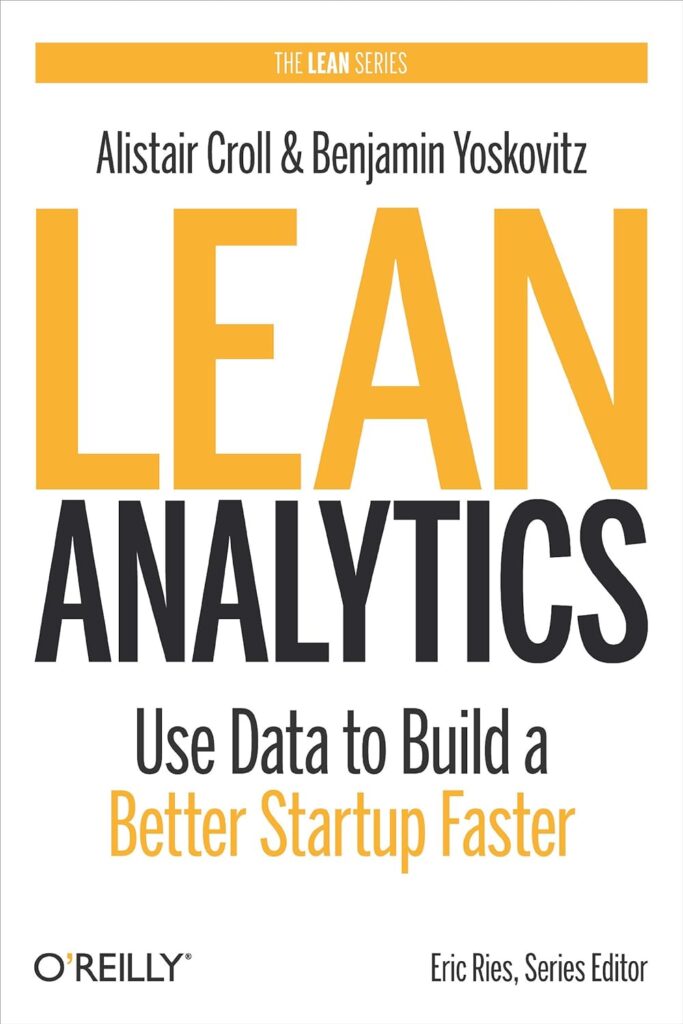
This book provides a practical guide to building successful products using Lean methodologies. It covers lean thinking, validated learning, and analytics for product managers.
“Escaping the Build Trap: How Effective Product Management Creates Real Value” by Melissa Perri

Melissa Perri explores the challenges of falling into the “build trap” and offers strategies for effective product management, focusing on delivering value and avoiding common pitfalls.
“Cracking the PM Interview: How to Land a Product Manager Job in Technology” by Gayle Laakmann McDowell and Jackie Bavaro

Geared towards those aspiring to enter the field, this book provides insights into the product management interview process, common questions, and strategies for success.
“Sprint: How to Solve Big Problems and Test New Ideas in Just Five Days” by Jake Knapp
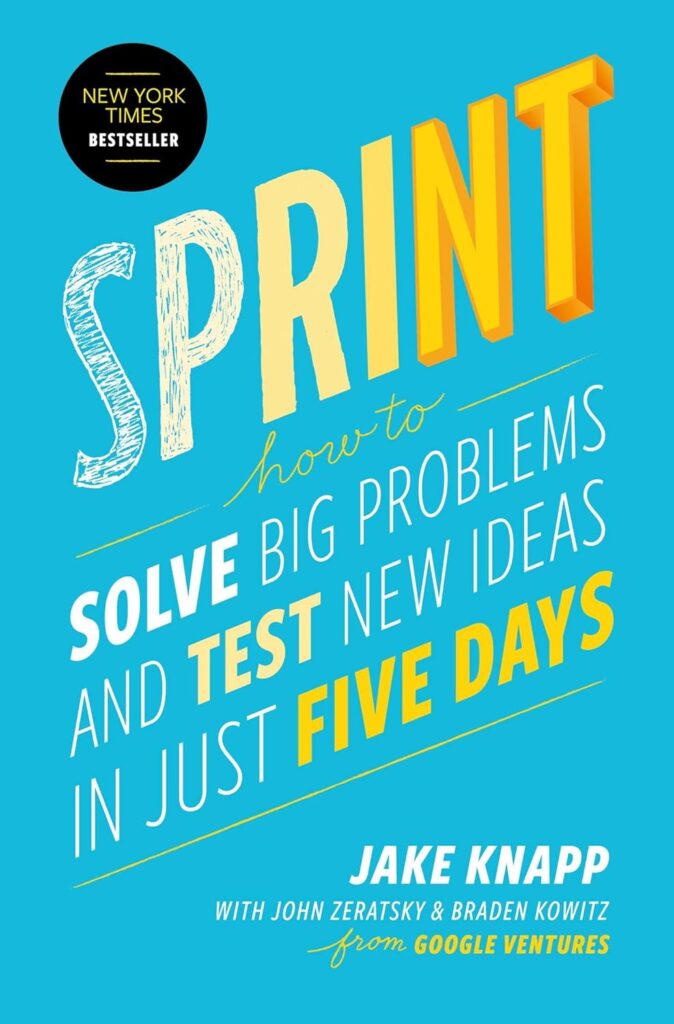
While not specifically about product management, this book by a Google Ventures design partner introduces the concept of design sprints, a valuable tool for quickly testing and validating ideas.
“The Lean Startup: How Today’s Entrepreneurs Use Continuous Innovation to Create Radically Successful Businesses” by Eric Ries
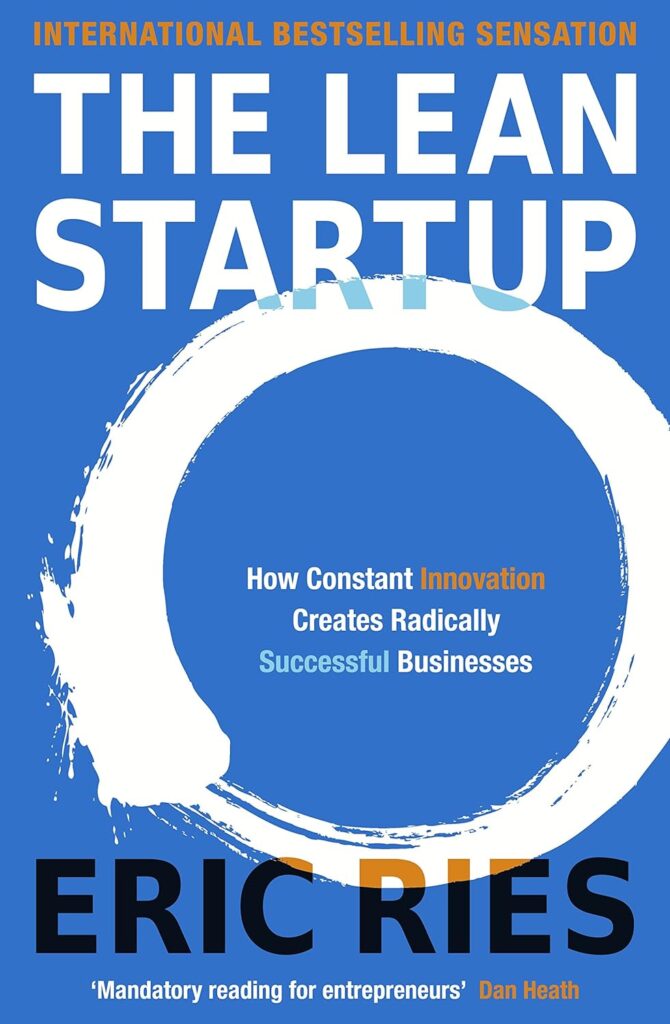
Eric Ries introduces the Lean Startup methodology, emphasizing validated learning, iterative product development, and a build-measure-learn feedback loop.
“Product Leadership: How Top Product Managers Launch Awesome Products and Build Successful Teams” by Richard Banfield, Martin Eriksson, and Nate Walkingshaw

This book explores the challenges and responsibilities of product leaders, providing insights on building effective product teams and launching successful products.
“Hooked: How to Build Habit-Forming Products” by Nir Eyal
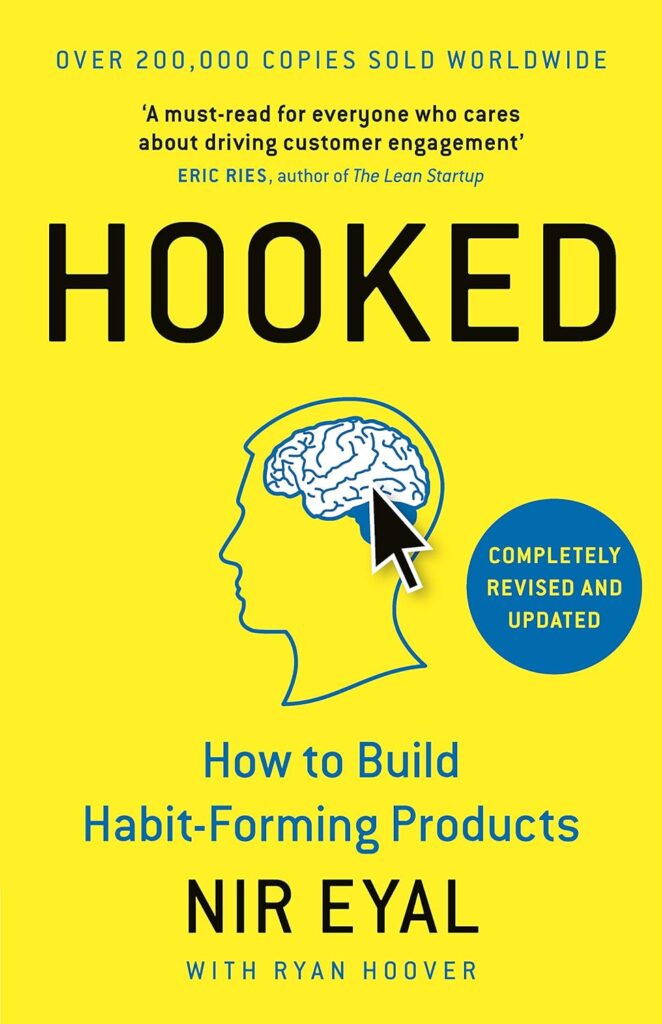
Nir Eyal delves into the psychology of building habit-forming products. It’s a valuable read for product managers interested in understanding user behavior and creating products that capture and retain users.
“Badass: Making Users Awesome” by Kathy Sierra

Kathy Sierra explores the concept of making users “badass” by creating products that help users achieve mastery. The book provides insights into user engagement and satisfaction.
These books cover a broad range of topics within the field of product management, offering valuable insights, strategies, and practical advice for both aspiring and experienced product managers.
For more books on product management check out here.
Challenges in Product Management

Balancing Priorities
Product managers often face the challenge of balancing competing priorities, from customer requests to technical constraints.
Adapting to Change
The fast-paced nature of the tech industry requires product managers to be adaptable and embrace change.
Communication Breakdowns
Miscommunication can lead to costly mistakes. Clear and transparent communication is vital for success.
Conclusion

Product management is an intricate dance of strategy, communication, and execution. A successful product manager must be adaptable, empathetic, and possess a deep understanding of both the market and the development process. By mastering the art of product management, businesses can not only deliver successful products but also build lasting relationships with their customers.
For more details on product management check out here.



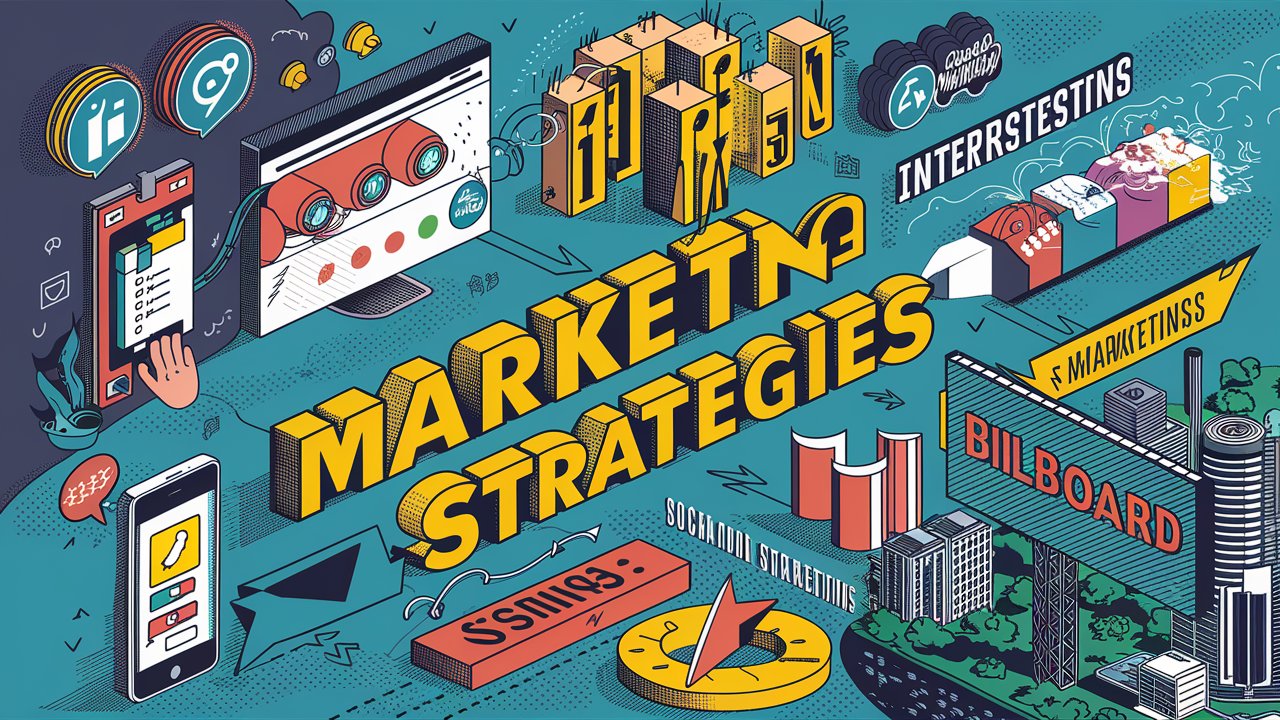

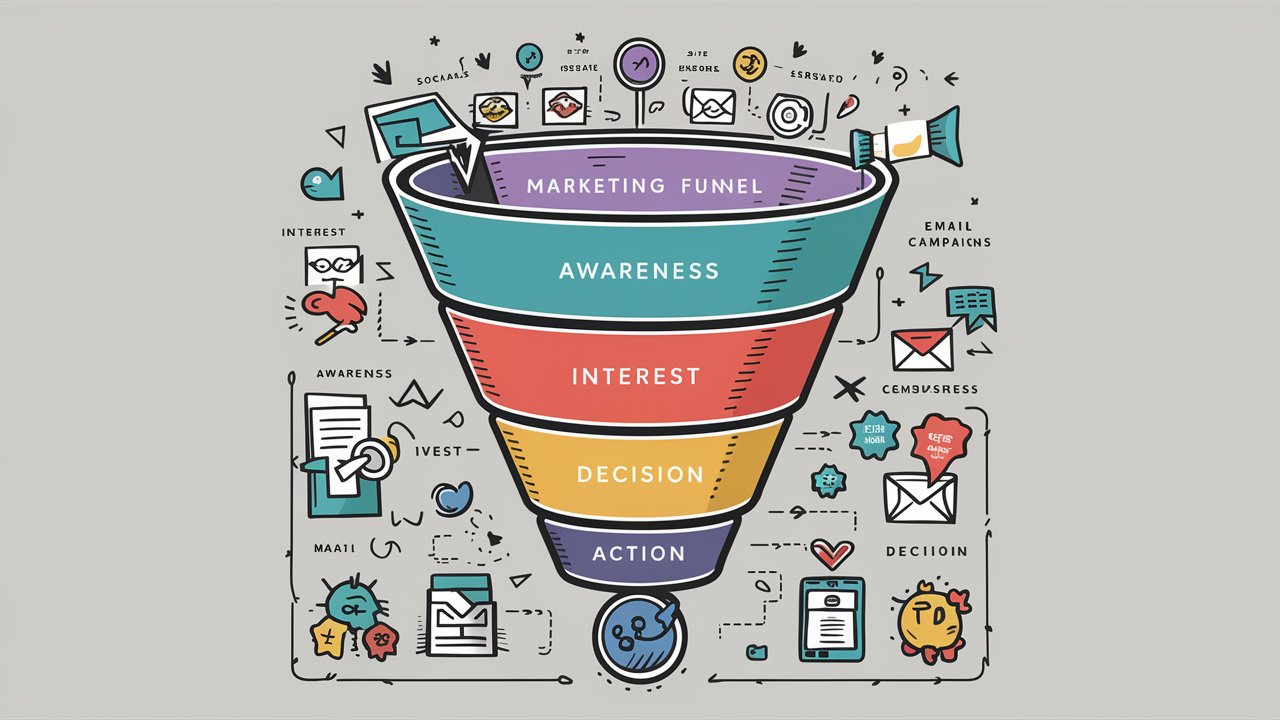
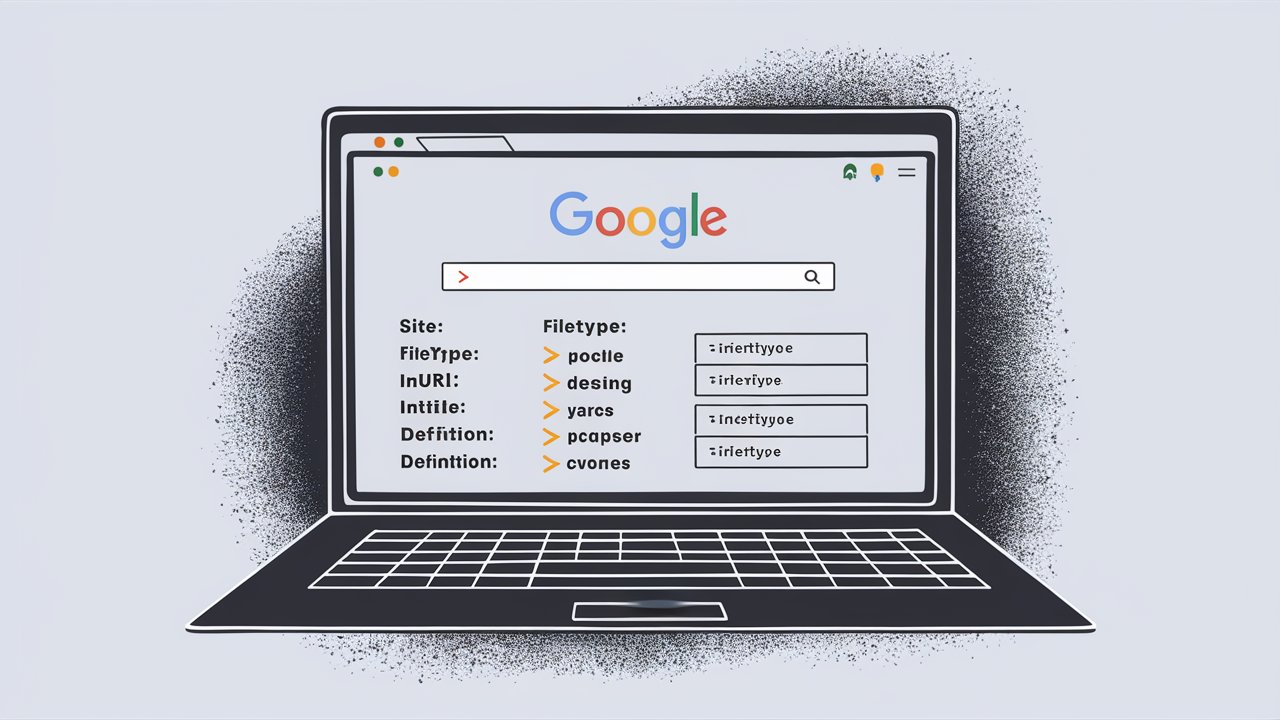

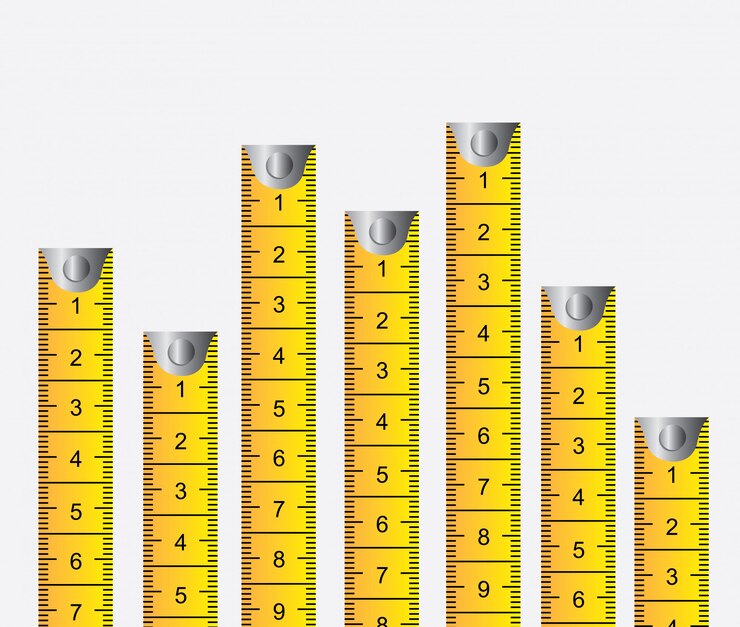



Leave a Reply